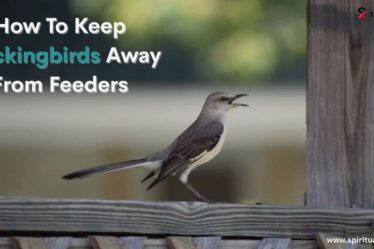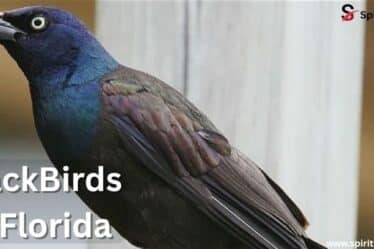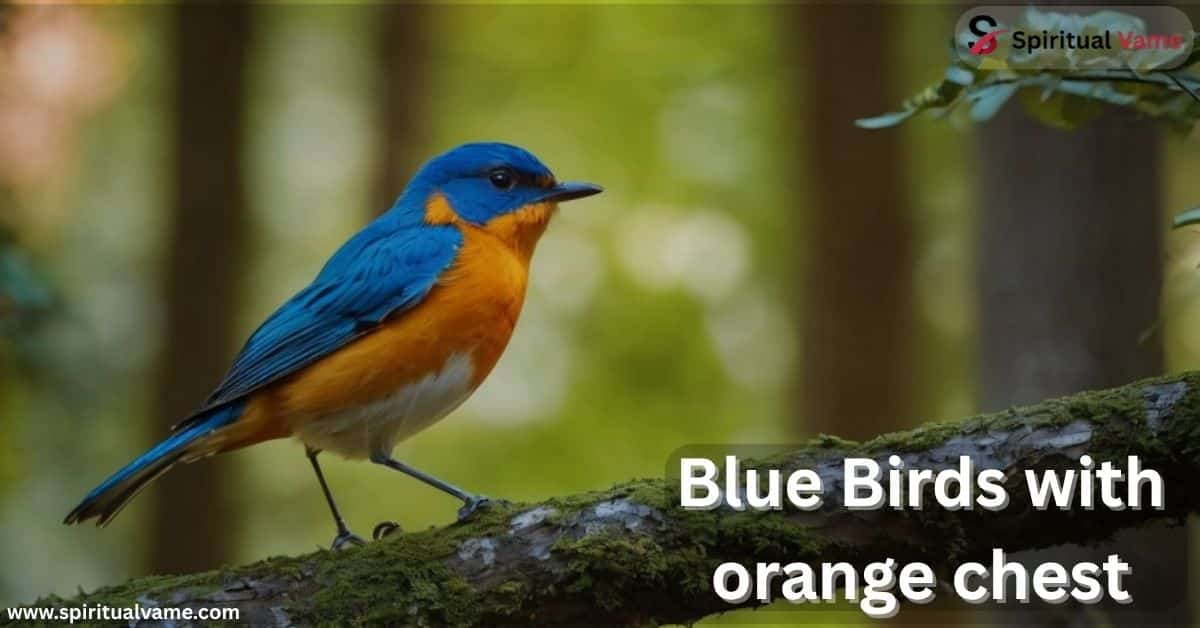
Birds with orange chests are some of the most colorful and eye-catching birds in nature. These birds are loved for their bright feathers and beautiful songs. You can find birds with orange chests in many places like gardens, forests, and parks. They live in trees, fields, and even near your home. Birds with orange chests makes them easy to spot and fun to watch.
This article will show you different types of blue birds with orange chest found in North America. You will learn where they live, what they eat, and how to tell them apart. If you enjoy birdwatching, blue birds with orange chest are a great place to start.
Birds With Orange Chests
Across North America, many bird species display orange chests, either year-round or during breeding seasons. Their coloration can range from a faint rust tone to deep, fiery orange. Some are small passerines, while others are raptors or long-distance migrants. Their habitats stretch across diverse ecosystems—coniferous forests, oak savannas, and even bustling parks. These birds play vital roles in their ecosystems by spreading seeds, controlling insects, and supporting a healthy food chain.
For anyone interested in bird identification, understanding the unique morphology, song, and taxonomy of these birds is essential. You’ll encounter birds that build nests in cavities, feed on berries and small fruits, and even nest in low elevations under scattered trees. Knowing where and when to spot these birds adds a deeper layer to your nature observations.
1. Eastern Bluebird (Sialia sialis)

The Eastern Bluebird is a small songbird known for its bright blue feathers and warm orange chest. Commonly found in open woodlands, fields, and suburban areas, it prefers to nest in cavity nesters like nest boxes or old tree holes. This species is a favorite for birdwatchers because of its friendly nature and sweet song. Their range extends throughout the eastern United States, and they are often spotted during spring and summer.
Their diet includes insectivorous choices like beetles and caterpillars, but they’ll also eat berries, elderberry, and juniper in colder months. These birds are essential in local ecosystems, controlling pest populations and spreading seeds. Their orange chest is more vibrant during the breeding season, helping males attract mates.
2. Western Bluebird (Sialia mexicana)
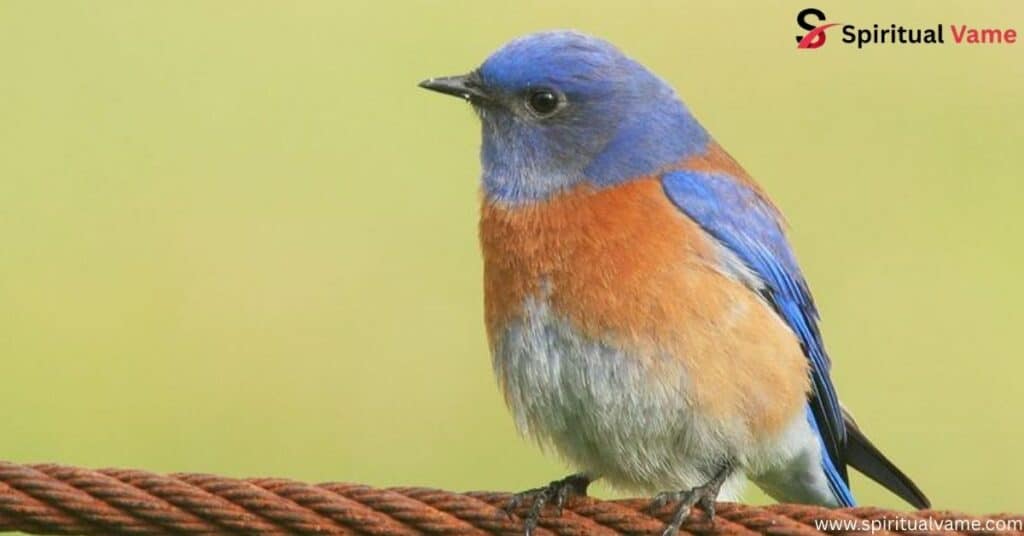
The Western Bluebird is a close cousin to the Eastern species but lives in the western U.S. It sports the same orange chest but often with deeper hues. These birds thrive in meadows, orchards, and along forest edges, and can be found from California to the Rocky Mountains. Their preferred habitat includes low elevations with plenty of scattered trees for nesting.
They feed on small fruits, insects, and will happily move into nest boxes if placed correctly. Like their eastern relatives, they are insectivorous and help control pests. Their seasonal migration is relatively short, and many stay year-round in mild climates. Watching a Western Bluebird flit through the trees is a joy for any nature lover.
3. Black-headed Grosbeak (Pheucticus melanocephalus)

The Black-headed Grosbeak is a striking bird with a rich orange breast, black head, and bold wing patterns. These birds are found in the western and central parts of the U.S., usually along riparian woodlands, suburban areas, and open forests. Their thick bills are ideal for cracking seeds and nuts, though they also enjoy berries and insects.
Their song is a melodic series of whistles, often compared to that of the American Robin. They are an important part of their ecosystem, aiding in seed dispersal and insect control. The males display brighter plumage during breeding season to attract mates.
4. Cooper’s Hawk (Accipiter cooperii)
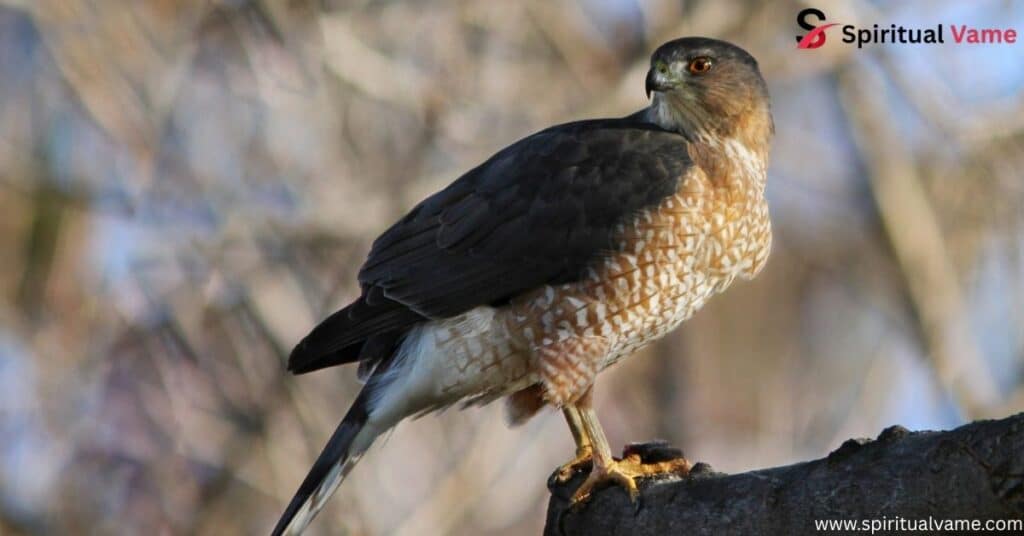
Cooper’s Hawk is a raptor known for its fierce hunting skills and orange-barred chest. Unlike typical forest dwellers, this bird has adapted well to suburban areas and city parks, where it hunts small birds and mammals. Its short wings and long tail allow it to maneuver quickly through dense vegetation.
This hawk nests in coniferous forests and high trees, often reusing the same nesting territory each year. During the breeding season, the male performs aerial displays to impress the female. The orange chest appears more distinct in adults, helping with species identification and classification.
5. Sharp-shinned Hawk (Accipiter striatus)
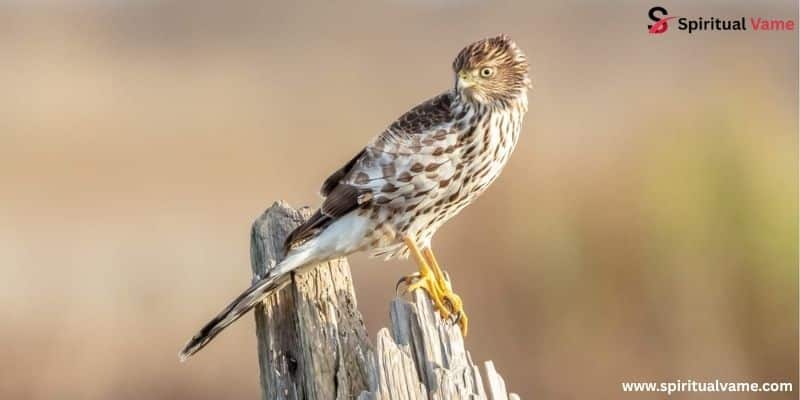
Slightly smaller than Cooper’s Hawk, the Sharp-shinned Hawk shares similar features but has a more delicate frame. It also has orange barring across the chest and is most often seen during migration. These birds follow songbird flocks and are expert aerial hunters.
They live in coniferous forests but may be seen passing through suburban areas during seasonal changes. Their behavior is stealthy and fast, and they play a critical role in maintaining ecological balance by preying on weak or sick birds.
6. Allen’s Hummingbird (Selasphorus sasin)
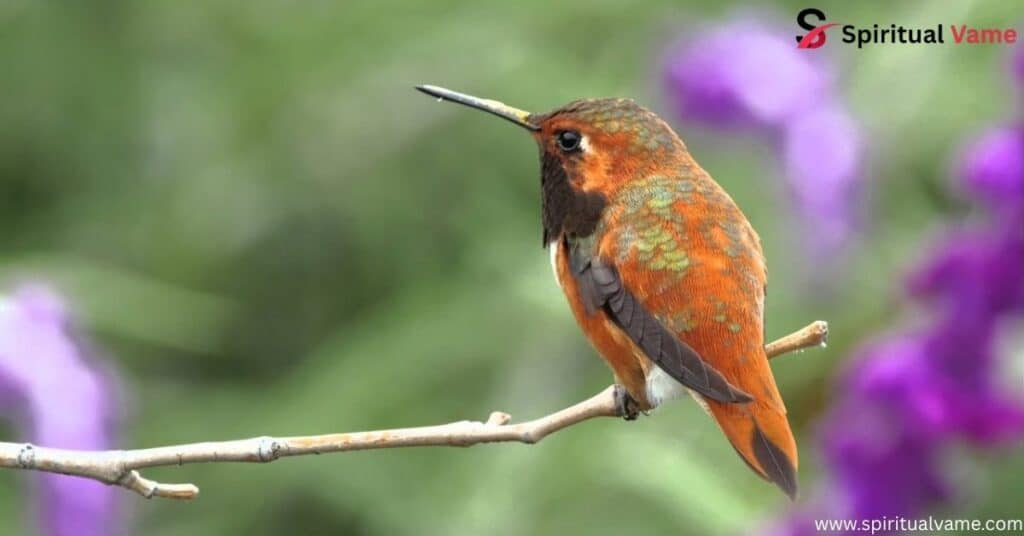
Tiny but dazzling, Allen’s Hummingbird features a reddish-orange throat and chest in males. Found mostly along the Pacific coast, it prefers meadows, coastal gardens, and suburban parks. Their flight is fast and erratic, and their vocalizations are high-pitched.
These birds are nectar feeders but also consume small insects for protein. Their breeding behavior includes aerial dives and dramatic wing sounds. With their metallic hues, Allen’s Hummingbirds are a gem in any backyard garden.
7. Rufous Hummingbird (Selasphorus rufus)

The Rufous Hummingbird is known for its long migration journey, sometimes traveling over 2,000 miles. Its orange chest and fiery feathers make it one of the brightest species on this list. Found from Alaska to Mexico depending on the season, it stops in meadows, orchards, and gardens for nectar.
These hummingbirds are extremely territorial. Males defend their feeding zones aggressively. They also play an essential role in pollination, linking them closely to the plants and ecosystems they visit.
8. Red Knot (Calidris canutus)
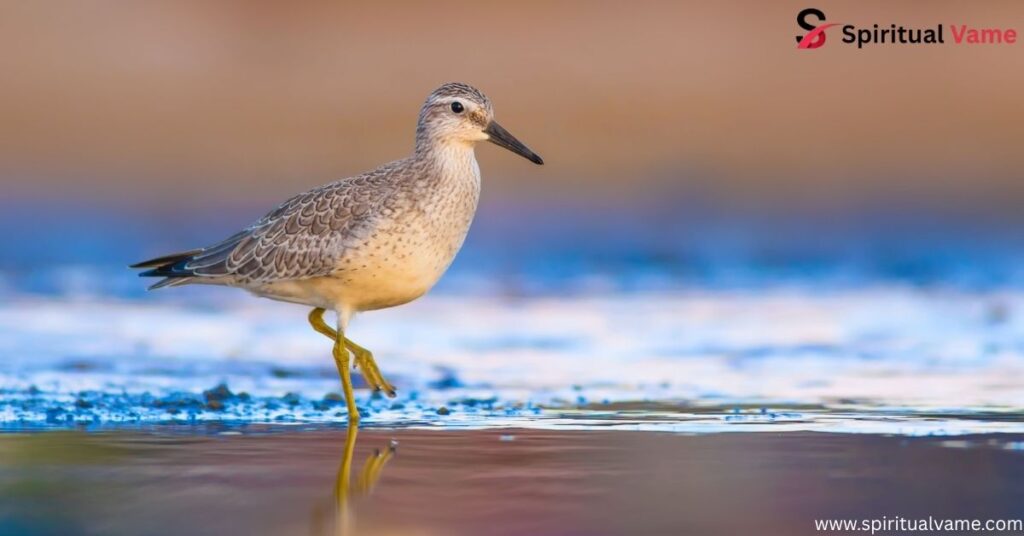
A long-distance traveler, the Red Knot wears a rusty-orange chest during the breeding season. It breeds in the Arctic tundra and winters as far south as South America, stopping along U.S. coastlines to feed. This shorebird relies on healthy wetland habitats for survival.
Their diet includes small invertebrates, and their survival is closely tied to conservation efforts around coastal ecosystems. Red Knots have been declining, making them a key species in habitat protection discussions.
9. Red-breasted Nuthatch (Sitta canadensis)
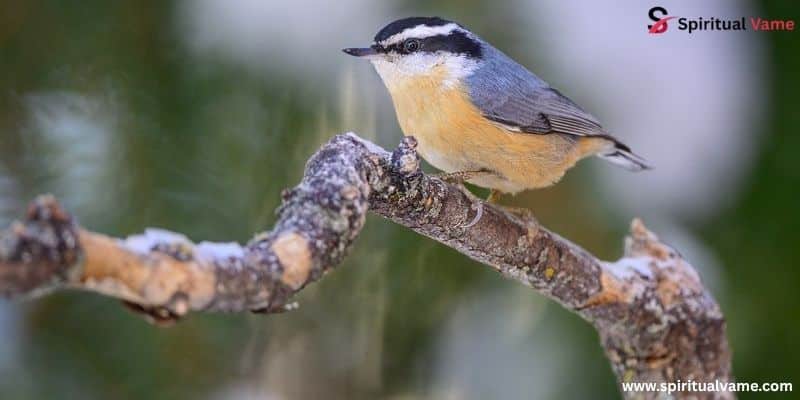
Red-breasted Nuthatches are small, acrobatic birds found in coniferous forests across the U.S. Their orange underparts and blue-gray backs make them easy to spot. These insectivorous birds cling to tree bark and forage for insects and seeds.
They often nest in cavity holes, especially in older trees. Their sharp, nasal calls and curious behavior make them a delight to observe. They’re also frequent visitors to backyard feeders, especially during winter.
10. Orioles, Warblers, and Thrushes
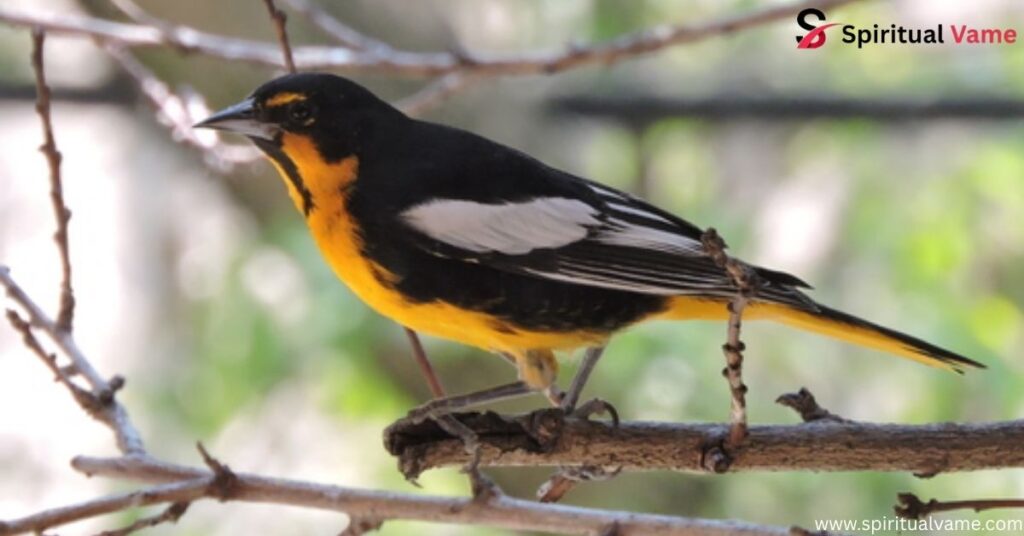
The next group includes several species with orange chests, like the Altamira Oriole, Baltimore Oriole, Bullock’s Oriole, Hooded Oriole, and Orchard Oriole. These birds are famous for their vivid color and are often found in meadows, parks, and oak savannas. They weave beautiful hanging nests and thrive in warm-weather areas of the U.S.
Warblers such as the American Redstart and Blackburnian Warbler add flashes of orange to dense forests, particularly during spring. Their songs are complex, and their movements are quick and darting.
Thrushes like the American Robin and Varied Thrush are more familiar to most Americans. These birds can be seen hopping across lawns, fields, and trails, pulling up worms or searching for berries. Their orange chests and flutelike vocalizations signal the change of seasons.
Birds with orange chest
Birds with orange chest come in many shapes, sizes, and taxonomic classifications. Some are blue flycatchers, others are kingfishers, and a few are more tropical, like the Blue-throated Macaw or Stork-billed Kingfisher. Though not all of them live in the U.S., they reflect the diversity found across the avian world.
Understanding their morphology, habitat, and migration routes helps us appreciate the beauty and purpose of their colors. Observing these birds gives insight into their breeding behavior, distribution, and role in local ecosystems.
Conclusion
Birds with orange chest are some of the most spectacular and fascinating species found in the United States. From tiny hummingbirds to powerful hawks, their orange feathers serve many roles—from attracting mates to blending into seasonal habitats. Their presence enriches our environment and teaches us about nature’s design.
With growing interest in birdwatching and conservation, it’s important to protect the habitats that support these birds. Planting native flora, reducing pesticide use, and setting up nesting areas can all make a difference. Whether you’re observing a Western Bluebird in your backyard or a Blackburnian Warbler in the woods, every sighting is a small connection to the wild beauty of North America.


